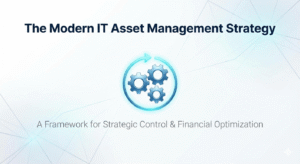Every business faces disruptions, whether it be a power outage, a cyberattack, or a natural disaster. How you prepare for these situations can determine if your company recovers quickly or suffers long-term consequences. This is why it pays to know whether you need to strengthen your business contingency plan or your continuity plan.
A business contingency plan and a business continuity plan are often used interchangeably, but they’re not the same thing. While they both deal with unforeseen events, they serve distinct purposes. One focuses on specific responses to emergencies, while the other is about keeping your business running in the long term.
Read on to understand their differences and how they complement each other so you can learn how to implement or strengthen both plans for greater resilience.
What Is a Business Continuity Plan?
A business continuity plan is a structured strategy that helps organizations keep operations running during unexpected disruptions. Its primary goal is to maintain essential functions, even under adverse conditions.
This type of plan goes beyond short-term recovery. It serves as a long-term guide to keeping your business running smoothly during disruptions such as cyberattacks, supply chain issues, or extended power outages.
A strong business continuity strategy includes policies, procedures, and recovery measures that ensure a company’s ability to deliver services without major interruptions. It often covers critical data, IT systems, customer communication, and access to key resources. It’s not just about reacting to a disaster but preparing in advance to keep your business stable.
A continuity plan is ultimately about protecting customer trust, reducing financial loss, and guaranteeing the company can continue providing services, no matter what happens.
What Is a Contingency Plan?
A contingency plan is a temporary solution designed to address specific risks when they occur. Unlike a continuity plan, it doesn’t cover long-term operations. Instead, it focuses on immediate responses to emergency situations.
The purpose of a contingency plan is to provide detailed steps for getting through adverse events, whether it’s a natural disaster (fire, earthquake, flooding, and the like), human error, or catastrophic events such as a major system failure.
Contingency plans are often more narrowly focused. They establish emergency services, resource allocation, and specific responses tailored to particular risks. For example, a contingency plan might detail how to handle a sudden IT outage, who is responsible for key tasks, and which backup strategy to activate.
These plans are essential because most disruptions are unpredictable. By planning ahead, companies can minimize downtime and prevent more serious disruptions.
Business Contingency Plan vs. Business Continuity Plan
A business contingency plan and a business continuity plan address different aspects of organizational preparedness:
Continuity Plans Focus on Maintaining Operations
A continuity plan is about keeping essential functions going under adverse conditions. It’s part of an ongoing process that supports critical business workflows, minimizes downtime, and helps maintain customer trust.
Contingency Plans Provide Immediate Responses
A contingency plan, by contrast, is narrower in scope. It focuses on specific risks and provides temporary solutions until normal operations are restored. These are the emergency plans that give companies a way to recover quickly when unforeseen events strike.
During a cyberattack, a continuity plan would guide ongoing data recovery and sustaining business operations. A contingency plan, however, would dictate the immediate steps, such as activating emergency services, switching to data backups, or reallocating key resources.
Both Plans Reduce Risk and Financial Loss
Together, continuity and contingency strategies protect critical processes, reduce financial loss, and safeguard critical data. Each addresses a different part of the recovery timeline, and when combined, they form a stronger defense than either could alone.
| Aspect | Business Continuity Plan | Business Contingency Plan |
| Purpose | Maintain ongoing business operations during and after a disruption | Provide specific responses to particular risks or emergencies |
| Scope | Broad, covering all critical business processes and essential functions | Narrow, focused on specific risks and immediate actions |
| Approach | Proactive and strategic | Reactive and tactical |
| Focus | Long-term resilience and recovery | Short-term response and mitigation |
| Components | Risk assessment, business impact analysis, recovery strategies, and communication | Risk identification, detailed response steps, resource allocation, and emergency contacts |
| Related reading: Do You Need IT Support or Cybersecurity? Here’s How to Decide |
The Role of Business Impact Analysis
A business impact analysis (BIA) is a key component of both contingency and continuity planning. It’s the first step in identifying potential threats and evaluating how they affect critical business processes.
A BIA highlights essential functions, recovery time objectives, and the resources required to maintain operations. Without it, planning lacks focus. For example, the analysis may reveal which IT systems and data are critical elements of the business and which can be deprioritized.
The process also helps in assessing financial loss tied to downtime and the importance of specific recovery strategies. Companies that conduct a thorough BIA can create plans that align with real-world risks and prioritize what matters most.
Business Contingency Planning and the Contingency Planning Process
Business contingency planning is about preparing detailed emergency plans in advance. It improves the company’s ability to respond, making it faster and more effective.
The contingency planning process typically follows three key steps:
- Pinpoint particular risks including natural disasters, cyberattacks, or mistakes caused by human error.
- Create emergency plans including detailed steps for emergency situations.
- Develop recovery strategies that outline how to recover quickly and restore critical elements.
Contingency planning doesn’t stop there. It’s an ongoing process that should include regular drills, tabletop exercises, and updates based on new potential threats. The goal is to strengthen resilience by enabling easy access to key resources, assigning clear roles to employees, and devising well-documented procedures.
When adverse events happen, effective contingency planning minimizes downtime and helps preserve customer trust.
Continuity Plan and Disaster Recovery Plans
A continuity plan often includes disaster recovery plans as a subset. Disaster recovery is the process of restoring IT systems, critical data, and applications following a disruption.
These plans outline specific recovery strategies for data backups, handling power outages, and recovering from system crashes. Without them, companies risk losing critical data and facing prolonged downtime.
Disaster recovery plans focus on recovery time, data recovery methods, and maintaining operations until normal conditions return. Additionally, emergency services, key tasks, and resource allocation are all part of disaster recovery. In case a natural disaster damages office infrastructure, the plan should clearly outline a backup strategy and alternative business function locations.
Companies should note that combining continuity planning with disaster recovery allows them to create a framework that facilitates their quick recovery from unforeseen events.
Critical Elements of Effective Plans
Effective continuity and contingency strategies share certain critical elements that provide structure and reliability when disruptions occur. Some of the most important include:
- Key resources such as staff, technology, and facilities
- Specific responses for different potential threats
- Detailed steps to guide employees during emergency situations
- Resource allocation to ensure essential functions get priority
Another critical element is training. Regular drills and tabletop exercises help employees practice responses and keep plans top of mind.
Together, these elements strengthen the company’s ability to respond to adverse conditions.
Preventing Financial Loss and Protecting Customer Trust
One of the biggest reasons for planning is to prevent financial loss. When systems go down, the financial impact can reach thousands per hour. Data from ITIC’s 11th annual Hourly Cost of Downtime Survey indicates that 97% of large companies (those with over 1,000 staff) experience annual losses exceeding $100,000 for each hour of downtime.
Disruptions also erode customer trust, which can take years to rebuild. A company that recovers quickly earns loyalty, while one that struggles may lose customers permanently.
For these reasons, contingency planning and continuity planning are not optional; they are key investments in your company’s long-term success.
Practical Steps to Develop Your Plans
The first step is conducting a risk assessment and identifying potential threats. From there, you can develop emergency plans and recovery strategies.
Plans should include detailed steps for specific risks. Each risk must have its own contingency planning process.
Regular drills and tabletop exercises are critical, too, as they prepare employees to handle emergency situations and reveal gaps in the plan.
Data backups, easy access to resources, and updated processes are also essential functions of planning.
Finally, remember that both continuity and contingency planning are ongoing processes. Make sure to review and revise them routinely to address emerging risks.
Key Takeaway: Both Business Contingency Plans and Business Continuity Plans Are Essential
When comparing a business contingency plan and a business continuity plan, the difference comes down to scope and timing. Continuity focuses on maintaining operations over the long term, while contingency addresses specific risks with immediate responses. Both are essential parts of a comprehensive risk management strategy.
If you want to protect your company’s ability to recover quickly, maintain customer trust, and minimize downtime, now is the time to start planning. Contact KME Systems to create or improve your business continuity and contingency plans so your business is prepared for anything — leave us a message for a free consultation today!





